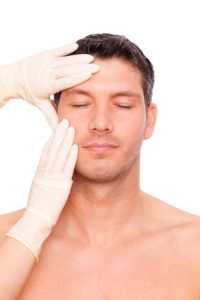Rosacea
Rosacea is a chronic skin condition of the face that affects an estimated 16 million Americans. Because rosacea is frequently misdiagnosed and confused with acne, sunburn, or eye irritation, a large percentage of people suffering from rosacea fail to seek medical help due to lack of awareness. It’s important to understand the warning signs and the need for treatment to make the necessary lifestyle changes and prevent the disorder from becoming progressively severe.
Although the exact cause of rosacea is unknown, you may be more susceptible to it if you:
- You are fair-skinned
- You blush easily
- You are female
- You have a family history of rosacea
- You are between the ages of 30 and 50
A frequent source of social embarrassment, for many people it affects more than just the face. Rosacea is a chronic skin disease, which means it lasts for a lifetime. Learning what triggers your rosacea is an important way to reduce flare-ups and manage symptoms. This may include avoiding stress, too much sunlight, heavy exercise, extreme temperatures, and certain foods or beverages.
What Are the Symptoms of Rosacea?
Rosacea frequently causes the cheeks to have a flushed or red appearance. The longer it goes untreated, the higher the potential for permanent redness of the cheeks, nose, and forehead. The symptoms will not be the same for every person. Common symptoms include:
- Facial burning and stinging
- Facial flushing and blush that evolves to persistent redness
- Redness on the cheeks, nose, chin or forehead
- Small, visible broken blood vessels on the face
- Acne-like breakouts on the face
- Watery or irritated eyes
If you recognize any of the warning signs, visit your dermatologist for a proper diagnosis. A dermatologist will examine your skin for common warning signs and tailor a treatment plan for your unique condition. Treatment will vary for each individual, ranging from topical medicine, antibiotics, and lasers or light treatment. While there is currently no cure, with proper management patients can learn how to avoid triggers, prevent flare-ups, and manage their condition to live a healthy, active life.












